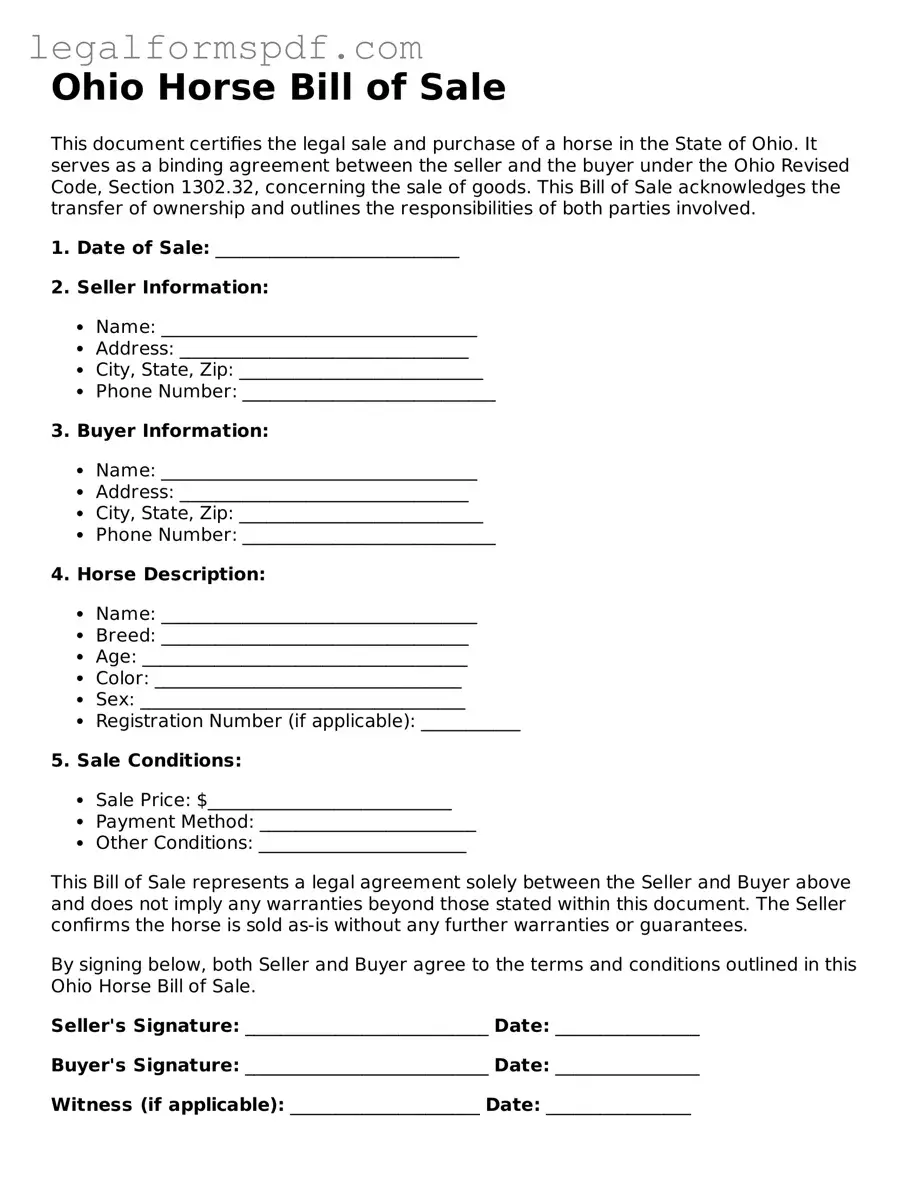What is an Ohio Horse Bill of Sale Form?
An Ohio Horse Bill of Sale Form is a legal document used in the state of Ohio to record the sale and transfer of ownership of a horse from the seller to the buyer. This form typically includes details such as the name and address of both parties involved in the transaction, a description of the horse being sold, the sale price, and any other terms or conditions agreed upon by both parties. It serves as proof of purchase and can be essential for registration, insurance, and legal purposes.
Why do I need a Horse Bill of Sale in Ohio?
In Ohio, a Horse Bill of Sale is crucial for several reasons. It provides a written record of the sale, which can help to prevent future disputes over the ownership of the horse. Additionally, it outlines the details of the transaction, providing clear evidence of the terms agreed upon by both the seller and the buyer. This document can also be necessary for tax purposes and is important for the buyer to have when registering the horse or obtaining insurance.
What information should be included in a Horse Bill of Sale?
A comprehensive Ohio Horse Bill of Sale should include the date of the sale, the names and addresses of both the buyer and seller, a detailed description of the horse (including breed, color, age, sex, and any identifying marks), the sale price, any warranties or guarantees provided by the seller, and the signatures of both parties involved. It may also detail specific terms and conditions, such as trial periods or return policies.
Is notarization required for a Horse Bill of Sale in Ohio?
While notarization is not specifically required by Ohio law for a Horse Bill of Sale to be considered valid, having the document notarized can add a layer of legal protection and authenticity. Notarization helps to verify the identity of the parties and the genuineness of their signatures, which can be particularly useful in preventing disputes or in court proceedings.
Can I write a Horse Bill of Sale by hand in Ohio?
Yes, you can write a Horse Bill of Sale by hand in Ohio. However, it is essential to ensure that the handwriting is legible and that all the required information is accurately included. Using a typed or pre-formatted document is often preferred to reduce the risk of misunderstandings or errors that can arise from hard-to-read handwriting.
What happens if I lose my Horse Bill of Sale?
If you lose your Horse Bill of Sale, it's important to act quickly. Contact the other party involved in the transaction and request a copy. If that's not possible, legal advice might be necessary to explore options for verifying the sale and ownership of the horse. It’s wise to keep a digital backup of the document to prevent such situations.
Are digital signatures accepted on Ohio Horse Bill of Sale forms?
As technology advances, digital signatures are becoming more accepted across various legal documents for their convenience and security. However, it’s crucial to ensure that both parties are comfortable with digital signatures and that the method used complies with Ohio's laws regarding electronic signatures. Always check the current legal standards or consult with a legal professional before proceeding with digital signing.
